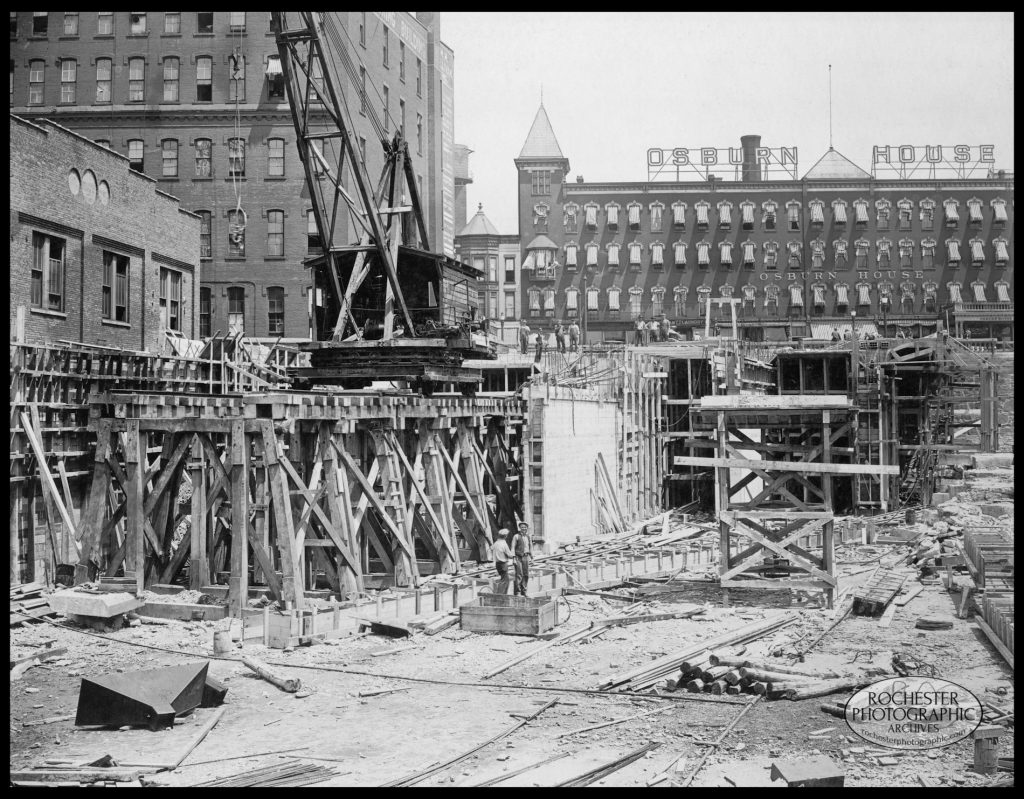
The original aqueduct over the Genesee River in the city of Rochester was opened in 1824. Built from sandstone quarried at Carthage at lower falls, it was regarded as one of the finest masonry structures in the world. At only 17 feet wide with a sharp turn, traffic could only travel one way and had to alternate. This caused bottle-necking. And it quickly began to leak. In 1842, Rochester opened the second aqueduct just a few feet north of the original. It was 34 feet wide and built entirely of Onondaga limestone, and it allowed for two-way traffic. For nearly 100 years, the Erie Canal brought prosperity to Rochester and the 1919-1920 season was it’s last. In part, the citizens of Rochester were happy to see it go. The stagnant water, filth, and drownings had worn on the city and we were ready to accept ideas to move our city into the future. In November of 1921 Mayor Edgerton set in motion plans to convert the existing canal bed into a trolley system, running that line across the aqueduct while adding an upper deck for automobile traffic. The ordinance passed unanimously and construction to convert the aqueduct began in 1922. The Broad Street bridge officially opened in 1924. These photographs show the construction. Photographs are by H. Manzler, 480 Meigs Street. Reproduced from 8” x 10” photographs.
TO VIEW FULL GALLERY, CLICK HERE.